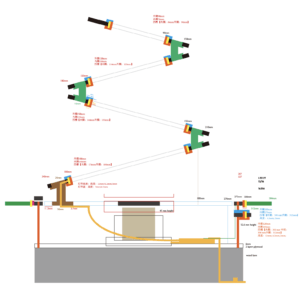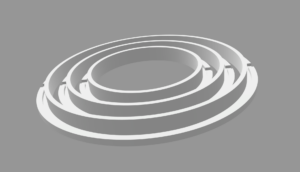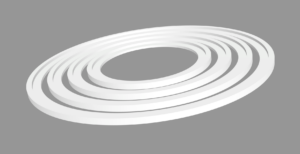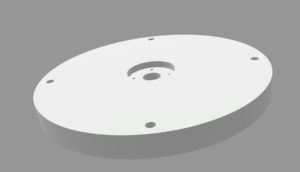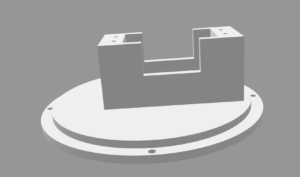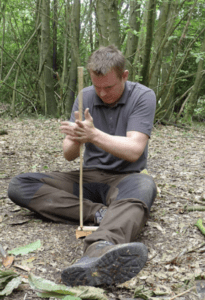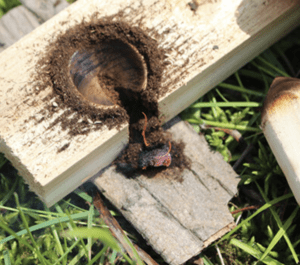This week I explore more on how to physically show the pretty analogy of tides for the ocean just like menstruation for women. I make a sketch and think about the mechanical issues. I met Tom to discuss my whole idea and the possible solution for the wiring problem with the continuous servo. And then I gave up… it’s still a good idea that servo gives a sense of growth but truly it’s too hard for me at least right now, whatever the gear system or the audio jack stuff. But it’s still should rotating, posited servo is not bad.
The installation is supposed to make with acrylic sheets and wood, the LEDs attach on discs to show the tide changes and servo rotation is driven by the current direction I also try to add the data of the moon phase which would be more helpful for visitors to think about the analogy between tide and menstruation. But something changes after this week.
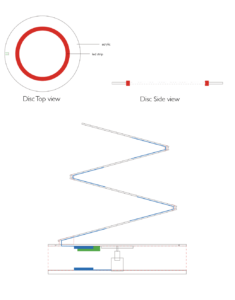
I explore lots of stuff this week…
@ HTTP delay
I get the tide data quite smoothly from NOAA, and I add the LEDs as output to test. But the animation is not good since the delay from the HTTP request. Tom told me a good library [scheduler] to make multiple loops together, one for HTTP requests, and another for the output but running locally. I can set the frequency of requests, during the interval time animation will work pretty smoothly and has a bit of delay when the data refresh, but it’s not a big deal.
@ LED strip animation
In the beginning, I think to make a LED animation will not take me a long time since there are lots of LED strip effect tutorials on YouTube but I’m wrong… The effects look cool but not the feeling I want, the peaceful and gentle one. Then I dive myself into the world of LED animation, it took me hours to figure out the effects I want. I will upload the code later.
Better in this video:
@ Using Data drives the servo? or just run locally?
Tom suggested me I can only use the tide down from the highest water level and the tide up from the lowest water level to trigger the change of the servo’s direction. Same theory to use when I get the direction data. But it takes 6 hours and 12 minutes to change direction once, the servo just moves too slowly that people even can not notice it… And the main reason I want to use the servo is for the sense of growth by rotating, so I decided to run the servo locally without any real-time data.
@ Jitter of servo
Since I plan to use about 160 LEDs which need high currents and 5 voltage, the servo is just super jitter when all of them work at the same time. I try to add capacitors and a servo driver but the jitter still be there. But the jitter has been solved by the API issues.
@ Moon phase Data:
I found a website named Stormglass that can provide astronomy data, even though the free account can only make requests 10 times a day, it’s enough for me. But the data is a little strange… it only shows 4 phases in one data object. Closest data shows the New moon, First quarter, Full moon or Third quarter. Current data shows the Waxing crescent, Waxing gibbous, Vaning gibbous, Vaning crescent.The documentation wrote there may have 8 phases in current data but not…

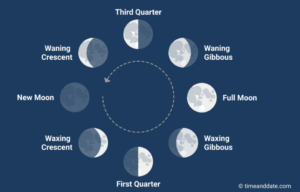
I still want to get the data for 8 phases and I try to learn the moon data, the website [https://www.moongiant.com/] is really good and obvious to learn some basic moon-related knowledge. The moon’s illumination also gives hints of the moon phase, the only problem is there has the same value between the waxing and waning. Thus I request the current position and moon illumination to make sure that I can get 8 phases.
@ Two APIs in One Sketch
Since I make requests to two servers so I code them separately at the beginning and works well, and it still works well after I put them together. But something goes wrong after I add all of my physical output, nearly 160 LEDs, and a high torque 35kg servo. The NOAA still gives me data but the stormglass just waiting for a long time and getting the status code, -3, timeout. But I think multiple APIs in one sketch should be fine, just wonder about the reason…
And the interval setting for each API is also annoying, make a request to NOAA every 6 minutes; a request to Stormglass once a day. And for the interval, I just simply add delay. It’s will not work in the same sketch… I think it should have another way to fix it …
Right now I found the solution is to use two Arduino and separately make requests to two APIs, and the servo included in the moon phase code the jitter problem just solved naturally. Maybe using two Arduino is stupid but it did solve something😂 At least right now, everything goes well…
Next week I will work on the mechanical parts, since the acrylic sheet with 1/4 thickness is quite heavy, and the sketch I draw right now has requirements on the structure. I need to test and adjust, and finding a material for the base that is heavy enough to stabilize the whole installation is also important.
I made a mistake last week in figuring out the API, I hadn’t used Tom’s demo, which gives a straightforward demo of how to set the interval time. I just noticed it after this week’s class and immediately removed the stupid delay… Here is my code.
Collecting all the API data I need via server and getting the data to Arduino is super helpful, since the moon phase API only has 10 times requests per day, not many chances to let me try the server code. I plan to continue using 2 Arduino Nano this time, if I can find a better API I will change to the server way.
This week I worked on the structure of the installation. I tried to 3d print some stuff as the fixations of LEDs strip and servo, and engrave some patterns on acrylic to see how it looks like when the light goes through.
